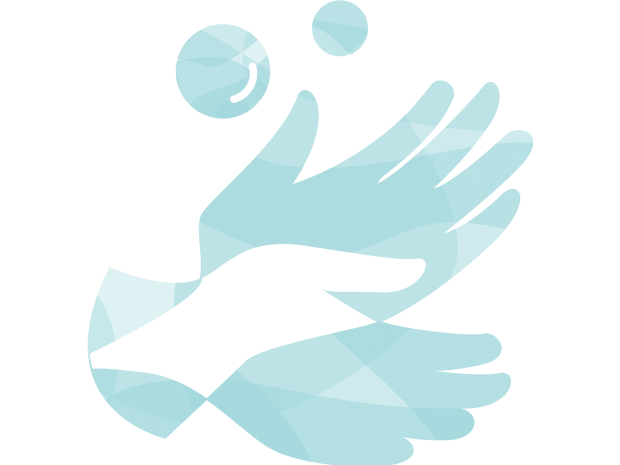
1. Wash your hands
Before you reach for your face mask, take a second to wash or use hand sanitizer to thoroughly clean your hands.

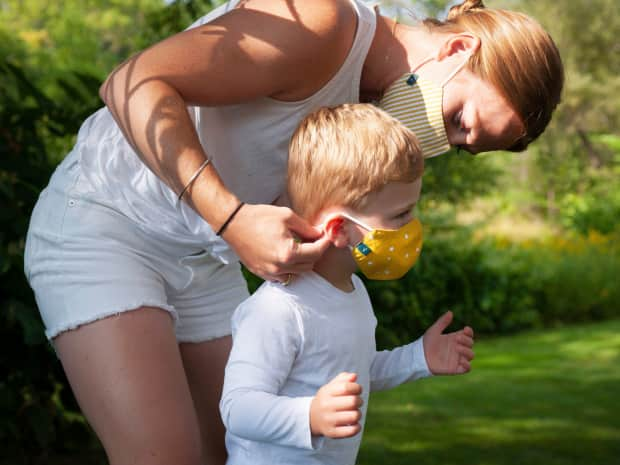
Last Updated: August 30, 2021
Unfortunately face masks have now become an integral layer of protection from infectious diseases and fire smoke in the air. Read on for our guide to face masks and which types are best for different situations.
Whether we like it or not, face masks have quickly become the newest accessory to our daily look. This integral layer of protection helps prevent the spread of coronavirus, influenza, and other infectious diseases by providing a barrier for respiratory droplets and other airborne particles. Wearing one in public not only prevents your respiratory droplets or bodily fluids from spreading to others, but it also keeps theirs from easily entering your nose and mouth. It protects not only you but also those around you.
But face masks are also equally important for bad air quality, especially to protect those with underlying lung or heart conditions. Fine particles in the air from smoke pollution are harder to filter out with cloth masks. Special particulate respirators are needed instead to prevent harmful particles from entering your lungs.
Overwhelmed yet? Well, we're diving in to see which masks are best for specific situations and we'll go over some face covering pointers that even the saviest of maskers may not know too. Discover everything you need to know about selecting, wearing, and washing a face mask with this simple guide.

While surgical masks, KN95 masks, and N95 face masks are often touted by experts as the best form of protection, there are some issues with these types of masks. N95 stop the smallest particles from coronaviruses and wildfire smoke from reaching your nose and mouth, but they also remain in short(er) supply. Ensuring proper fit of an N95 mask is also hard to do on your own if your face shape isn't best for this type of standard mask.
Disposable surgical face masks, while convenient, can be harmful to the environment, and the cost of replacing them really adds up over time.
Choosing a reusable cloth mask or sustainable fabric face mask will cost slightly more upfront, but they're easy to clean and help keep disposable masks and disposable respirators out of landfills.
The good news is that finding a face mask to stop the spread of viruses, like COVID-19 or the flu, is pretty easy. It's been found that any type of face covering that fits snugly around the top of your nose and the bottom of your chin works!
That means a natural choice like a face mask made of natural materials, such as hemp or organic cotton (instead of synthetic fibers) works great for daily use against viruses, COVID-19, and more. Choosing a mask with ear bands instead of tying straps can also make it easier to put on and take off. Finally, don’t be afraid to have fun with it. Choosing a face mask in vibrant florals or a fun pattern makes it a great accessory.
For that extra layer of protection, choose a mask with an opening in the design that allows for a filter. PM 2.5 filters are easy to change out and help provide an additional barrier.
PM 2.5, also known as fine particulate matter, are "tiny particles in the air that reduce visibility and cause the air to appear hazy when levels are elevated." Symptoms of PM 2.5 expsoure can be as small as itchy eyes and a runny nose or as problematic as lung and heart conditions. Elderly people and children are especially susceptible.
These filters are sometimes made with the same materials as N95 masks but allow more breathability than those surgical masks. These filters can help prevent inhalation of the finer particles from wildfire smoke and respiratory droplets when inserted into your reusable cloth mask. Plus, they fit small faces, like kids', much better than standard N95s.

Wondering who Grove is, what types of products we offer, and how to get a free gift set when you sign up? Learn more about flexible monthly shipments, customizing your shipment, and joining millions of happy households — no monthly fees or commitments required.
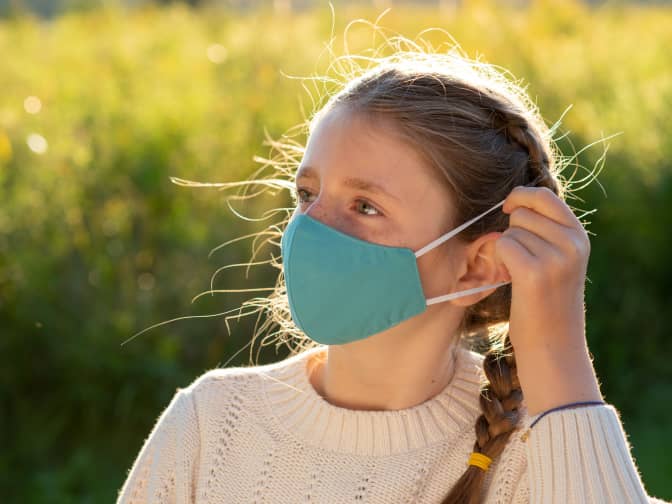
For a face mask to be effective, it must be worn properly. Make sure your face mask is always covering your nose, mouth, and chin. The straps should be tied behind your head or looped around your ears snugly.
Respiratory droplets can enter and leave the nose and the mouth, so only covering one of those is basically like not wearing a mask at all. Covering the chin will help prevent respiratory droplets from coming under the face mask and entering your nose or mouth.
For this same reason, it’s important to have a mask that fits your face properly. One that is too big will leave large gaps for bacteria to get in, and one that’s too small won’t cover the necessary areas effectively. Look for masks that have adjustable ear straps so you can adjust the fit. And, for the kiddos, find kid-size masks that specifically are for smaller faces (with adjustable straps too) so you can get the best fit for your child, as well.
When it’s time to remove your face mask, wash your hands, untie the strings or grab the mask by the bands, and remove the mask. Fold the outside corners together and store your mask. Wash it after a day's use. Make sure to use hand sanitizer or wash your hands again after handling your worn mask.

Before you reach for your face mask, take a second to wash or use hand sanitizer to thoroughly clean your hands.

As you reach for your mask and put it on your face, try to touch the bands and straps only to avoid transferring any bacteria to the fabric.

Make sure your mask is covering your nose, mouth, and chin to ensure maximum protection. If there is a metal nose clip, pinch it gently for a snug fit. If there are adjustable ear straps, tighten them so the mask is snug on your face.

With your mask in place, take a deep breath to make sure everything fits comfortably and no adjustments are needed before touching other items. This will ensure you won't touch and adjust your mask as much while you're out.
It’s always a good idea to maintain at least six feet of distance between you and another person (regional guidelines may differ), but that’s not always an option. When you are out in public and can’t maintain the proper social distance, protect both yourself and others by wearing your face mask.
This includes any time you’re shopping in a store, entering an office, or interacting with others outside your immediate family in an enclosed space. And effective February 2, 2021, masks are required on major forms of public transportation, including planes, buses, and trains too.
According to the CDC, the exception to this rule is children under the age of two, as they are too young to wear a mask safely. Anyone with breathing problems should also consider whether wearing a mask is safe for them and consult the CDC's recommendations for mask adaptations and alternatives.
We've all started growing accustomed to looking at the air quality index for the day, especially if you're in a fire season zone. So what number constitutes bad air quality and when should you wear a mask for smoke?
The American Lung Association says "The Air Quality Index, or AQI, is the system used to warn the public when air pollution is dangerous. The AQI tracks ozone (smog) and particle pollution (tiny particles from ash, power plants and factories, vehicle exhaust, soil dust, pollen, and other pollution)." Bad air quality starts at numbers of 100 and higher, especially for children, elderly people, and people with breathing problems. 150 and higher is dangerous and considered bad air quality for all people. This is when N95 masks for reusable masks with PM 2.5 filters are necessary.
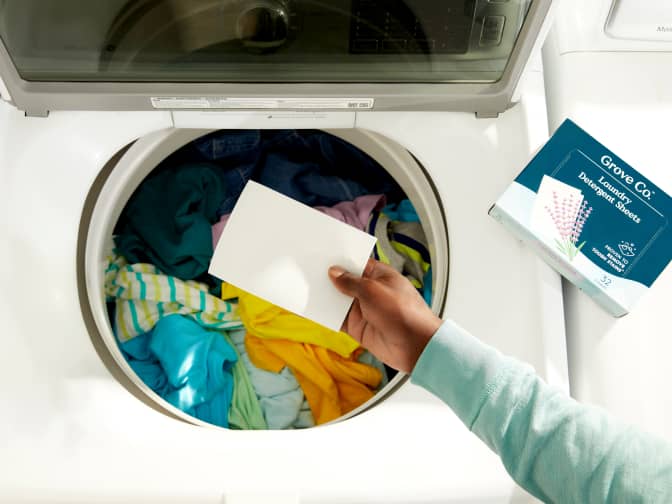
Cloth face masks are reusable, but they do require regular cleaning. Fortunately, cleaning your face mask is as easy as washing your usual laundry.
Simply throw your face mask in with your daily load of laundry, using the highest water temperature and drying temperature suitable for the fabric — some face masks suggest air drying, depending on the material.
The CDC recommends washing your mask after each wearing. If daily laundry isn’t your thing, consider purchasing a few different face masks for everyone in your household so you can go two or three days between trips to the laundry room. Wash all your face masks at once, and you’ll be good to go for the next couple of days. (Just remember to keep one out to wear if you do your laundry in a communal or shared space!)
Cloth face coverings are designed for ease of care. Include them in a regular load of laundry, and wash them with your standard laundry detergent on the appropriate settings for the fabric (usually found on the label).
To clean your mask by hand, add soap or laundry detergent to room-temperature water. Soak the mask for five minutes, and rinse thoroughly with clean, cold or room-temperature water.
Dry your mask in the dryer according to the fabric instructions, or line-dry your mask in direct sunlight, making sure to wash your hands before hanging it up. If you can't hang in direct sunlight, hang or lay flat until completely dry.
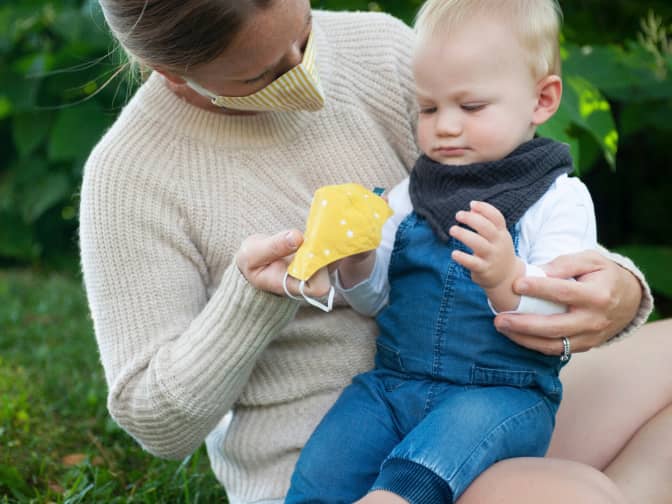
Wearing face masks in public and at school is a reality for kids, too. Giving them more ownership over their face masks and encouraging them to wear them more by letting them be involved in the selection process are good starting steps to getting kids to be more invested in staying safe by wearing masks.
If the children are young, it’s a good idea to manage their masks for them. Keep your child’s mask with you, and assist them with putting it on and remembering to put it in the laundry.
Teach older children how to wear their masks, and let them choose a style that aligns with their sense of fashion. Teaching them the importance of wearing a mask is really just like teaching them the importance of wearing a helmet before hopping on a bike.
Grove Tip
If your kiddo loves to show off their artistic side, take it a step further by allowing them to add iron-on patches or even draw on their face mask using fabric markers so they can really personalize it.
Finding a mask lanyard that expresses their style through color or jewelery style is also an easy way to let kids make mask wearing their own.

Face masks aren’t the only way to help protect yourself and others from the spread of disease. It’s also important to:
Wash your hands frequently with hand soap, and make sure to keep hand sanitizer with you on the go.
Learn more about the differences between soap and sanitizer here!
Make a conscious effort to keep your hands away from your face, especially the nose and mouth areas. Nail-biters beware, this is the time to paint those nails and let them grow.
Whether you're avoiding a Delta outbreak or trying to stay out of wildfire smoke and a high AQI, this is a great time to get back to your favorite home hobby and catch up with friends over FaceTime. Whenever possible, stay home and avoid public settings. When you do have to run errands, consider going at less-popular times of the day or when the air quality has gotten better.
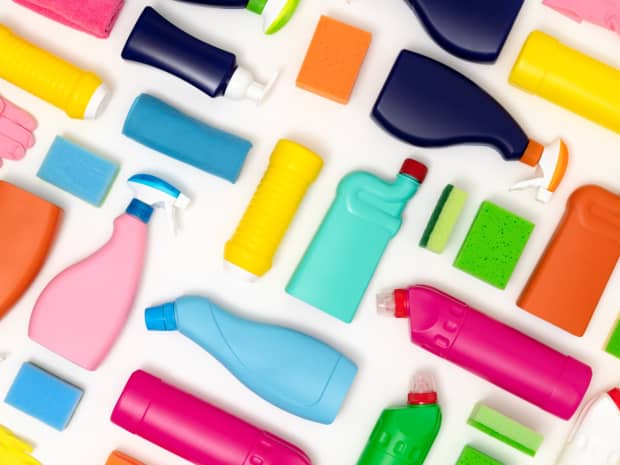
When cleaning your house, can you mix bleach and vinegar to increase your effectiveness? Find out more!

Who knew learning how to bathe a tiny human could be so overwhelming and complicated?

The best ways disinfect your home to reduce the spread of germs and bacteria.

Learn about the difference between sanitizing and disinfecting cleaners.